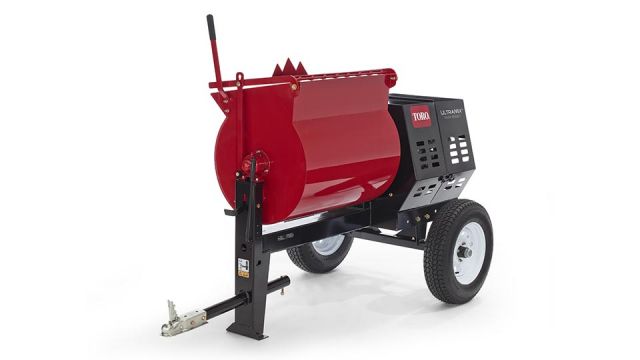When rental makes cents
Are dollars are best spent by purchasing new equipment or renting?
Renting may a sensible choice over purchasing when it comes to the world of heavy equipment for a number of reasons. But, do the same rules apply regarding concrete and masonry equipment, which – generally speaking – have a smaller price tag? The short answer is “yes,” in many cases.
Certain organizations can greatly benefit in the long run from leasing or renting equipment, and there are other organizations that may not see as much of a positive impact to their bottom lines from these options. Contractors who have multiple jobs going on at the same time will typically own a fleet of equipment, including trowels, mixers, screeds and vibrators at their disposal. For these organizations, typically, some creative logistics allow them to move equipment within their fleet from one job to another without having to enter into a rental agreement with their equipment partners.
Smaller or mid-size contractors who prefer to keep a lean fleet and avoid investing in storage and maintenance of the equipment can greatly benefit from a proactive rental program. They can actively monitor projects in the pipeline, and work with a rental provider to meet their individual project needs.
Maintenance, service and support
The real beauty of renting comes in the form of reduced maintenance and service costs for the contractor. Apart from some simple routine procedures to maintain the equipment while it’s on the jobsite, the rental store performs the majority of the maintenance efforts once it is back in their hands. This essentially means the contractor doesn’t have to worry about hiring a full-time technician to service equipment, and contractors don’t have to spend their hard-earned money on parts and labor to repair equipment. Furthermore, reputable rental stores generally stand behind their equipment. If it breaks down while it’s on the jobsite, the rental store technicians will either repair the equipment or replace it with a comparable unit to minimize downtime on the job.Storage
Regardless of the organization, equipment simply isn’t in use around the clock. Warehousing and storage fees, especially in urban areas, can equate to a big investment for the contractor. By renting only the equipment needed for a pre-determined amount of time, contractors are able to cut down on their storage and warehousing fees substantially. Each piece of equipment has a storage footprint, and that footprint equates to additional costs.Ready to rent
One of the key factors that determine whether a piece of equipment is suitable for rental is durability. Rental equipment takes a beating daily, and, for manufacturers, that means that using top-quality, heavy-duty components is crucial to deliver a rental-ready product.Each case is unique
When weighing the options of purchasing versus renting, contractors have to consider a few factors. Determining how much a piece of equipment is expected to be used, and how long will it take to recoup the upfront capital investment of this piece of equipment, are each important. If a contractor believes that he will get a lot of use out of the equipment over an extended period, perhaps it makes more sense to purchase. Conversely, if a contractor estimates that the equipment may not be used regularly, rental is the obvious choice. The contractor can essentially keep the fleet lean and forgo substantial maintenance and storage costs associated with owning a robust equipment fleet.There’s no single correct answer, and each organization is ultimately tasked with deciding what is right for that business, based on the equipment’s potential frequency of use, the length of the project, and whether the personnel to properly maintain and store the equipment is in place.
Originally published in Masonry magazine.
About the Author
Sean O’Halloran is marketing manager at The Toro Company.



















